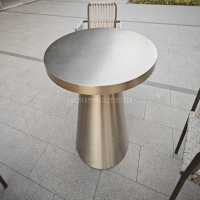Welcome to the website for landscape facilities products and knowledge.
How does the table’s design account for ease of repair by non-professionals?
Contemporary table designs have revolutionized furniture maintenance by incorporating features specifically engineered for non-professional repairs. The fundamental principle driving this accessibility lies in modular construction, where individual components can be independently replaced without requiring specialized tools or advanced technical knowledge.
Manufacturers achieve repair-friendly designs through several strategic approaches. Modular leg systems utilize standardized connectors that enable straightforward detachment and replacement. Table surfaces often feature reversible tops or interchangeable panels, allowing homeowners to flip damaged sections or swap out specific segments. Connection mechanisms predominantly employ tool-free fasteners, thumb screws, and intuitive locking systems that eliminate complex disassembly procedures.
Accessible component architecture represents another critical design consideration. Manufacturers deliberately separate vulnerable elements like corner brackets, support beams, and surface panels into discrete, easily identifiable units. This compartmentalization ensures that when damage occurs, users can pinpoint the exact replacement part without dismantling the entire structure. Clear instructional labeling and color-coded connection points further simplify the identification process.
Material selection plays an equally important role in facilitating user repairs. Many modern tables incorporate durable, lightweight composites that resist permanent deformation while remaining manageable for individual handling. Surface treatments often include scratch-resistant coatings and stain-protective layers that minimize common household damage, reducing the frequency of necessary repairs.
The industry has also standardized common replacement parts across multiple product lines, ensuring compatibility and availability. Leg extensions, stabilizing feet, and connector hardware frequently follow universal sizing conventions, enabling consumers to source components from various suppliers without brand restrictions.
For ongoing maintenance, designers incorporate hidden access panels and discreet storage compartments that house essential tools and spare fasteners. Some innovative models even include integrated measurement guides and alignment aids that assist users during reassembly procedures. These thoughtful implementations transform what was traditionally professional furniture repair into manageable household tasks, significantly extending product lifespan while reducing maintenance costs.
This user-centered design philosophy represents a fundamental shift in furniture manufacturing, prioritizing long-term usability and owner empowerment over purely aesthetic considerations. By understanding these design principles, consumers can make informed purchasing decisions that align with their maintenance capabilities and long-term ownership expectations.
Related search:

Recommendation
Outdoor Metal Table - Classic Outdoor Furniture, Stainless Steel Table, Durable and Reliable